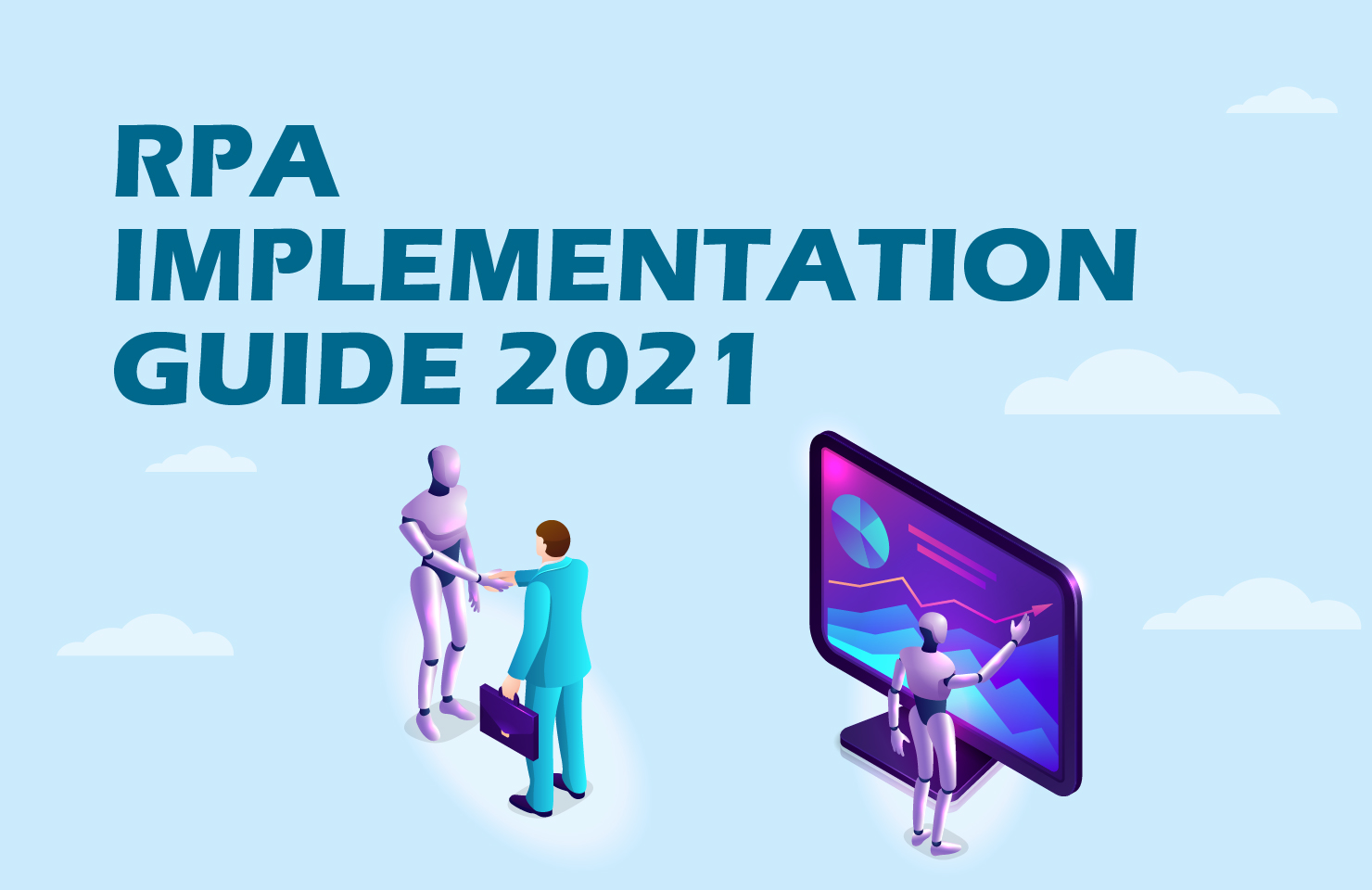Business impact, data touchpoints, and ROI are the multiple factors involved in effective automation. Implementation of Robotic Process Automation promises to help enterprises eliminate labour-intensive tasks and empowers organizations to focus on activities that support to stay ahead of the curve. Researches have shown that many RPA implementations are ineffective to scale up as the business grows. The challenges that derail the viability are organizational barriers, process fragmentation, and a wide variation of offline and online tasks. This blog provides an ultimate implementation guide for 2021 followed by the best RPA vendors across the world.
This blog covers:
Robotic Process Automation in the Automation Landscape

RPA implementation is completely different from building a fully automated platform. An RPA robot mimics a human task. The tasks can be data retrieval, entry, clicks, file uploads & downloads, or invoice processing. It can improve the speed and accuracy of tasks completion. On the other hand, fully automated platforms employ systems, process and 3rd party services that are purpose-built for automation. By integrating with other automation software, RPA can become a valuable component of an automation strategy.
7 Steps to Implement Robotic Process Automation
Discover Opportunities to Automate
An organization should determine the adaptability of their process to automation. Every process should be unique and viable to automate irrespective of the process size, industry and other factors that determine the attributes of the processes.
Evaluate the Opportunities
RPA can be designed to achieve quick wins on transactional activities. The identified opportunities should be analysed to filter transactional and deciding parts. Then, the opportunities should be evaluated for RPA adaptability.
Choose the Design Model
Organizations should choose the design model that best fits their requirement. They may need to redesign the process to maximize the automation scope. The plan should align with the business needs. Processes can be split into multiple subprocesses and each subprocess may have a different design model.
Develop the RPA Plan
Understand all the exception scenarios while conducting a thorough study of the processes. Develop the RPA implementation plan in phases. Evaluate the plan performance at every phase and then move to the next phase.
Deploy the Pilot
Run a pilot project with the right RPA tools before implementing the developed plan. It allows the RPA vendor and the organization to observe the effectiveness and overall performance. The results of the pilot should be analysed thoroughly and the plan should be recrafted. It is good to involve the stakeholders to understand the long-term plan.
Roll out the Plan
Roll out the plan with proper documentation. Post-implementation training should be offered to the stakeholders of the organization by the RPA vendor.
Maintenance of Automation
Automation is not a one-time activity. The plan should be recrafted and the implemented robots should be tweaked as the processes and systems change. There should be a proper change management plan in place to align the bots based on the changes in the processes.
[Case Study] Driving Efficiency with Invoice Processing Through RPA
7 Key Questions for your RPA Vendor
- Do you have experience in RPA implementation?
- Do you have a clear roadmap?
- How integrated is the automation platform?
- How can you find the best integration opportunities?
- Are the solution maintainable and scalable?
- Does the key consultant stay with us until the project completion?
- What type of support can I get after the implementation?
Unparalleled Pros of RPA

Increase Productivity & Efficiency
RPA robots are fully focused on specific tasks. They can calculate, click, and navigate through screens in a few seconds. It supports employees to stay productive and in turn, cuts cost. The robots never take breaks and work 24/7.
Maximize Accuracy
To err is human. Unless a software robot is wrongly implemented, it usually doesn’t make mistakes. Eliminating processing errors is one of the main benefits of RPA implementation. As long as the business processes are correctly optimized and accurately mapped, RPA works perfectly in any given condition.
Scalability & Flexibility
RPA offers flexibility to adapt to the demand of type and number of tasks needed for any given objective. Organizations can accommodate the selected requirements and can scale as the needs grow. As it is time and tasks specific, RPA can be adopted by even small businesses.
Easy to Implement
Robotic Process Automation implementation does not require APIs. It saves huge cost and time. It comes with its own set of Graphical User Interface. With that, an experienced automation engineer can seamlessly deploy the robots based on the organizations’ needs.
Error-Free Analytics
RPA helps organizations to see right through the data and get actionable insights. It can help to collect data from disparate sources with minimal or near-zero errors that help businesses to make smart decisions.
Secure Data
Robotic Process Automation software can be integrated with multiple applications to enhance enterprise security. It reduces the risk of unauthorized access to business-critical functions by inheriting the existing security infrastructure.
Customer Satisfaction
RPA increases customer satisfaction with high accuracy and improved customer interaction. It acts fast and provides better resolution with a Quick Turnaround Time. The robots can be customized based on customer interactions in different business functions.
Download RPA Calculator Master Sheet







